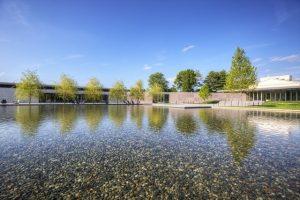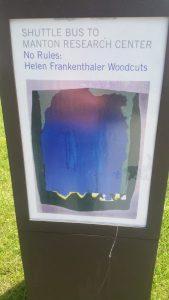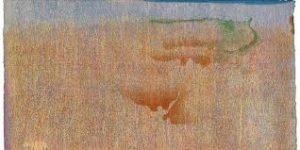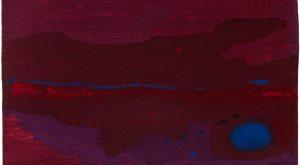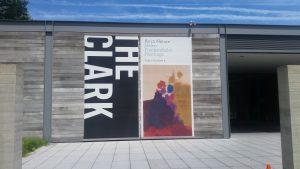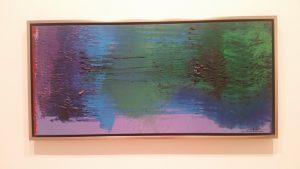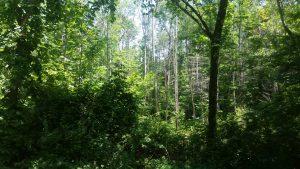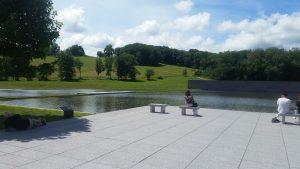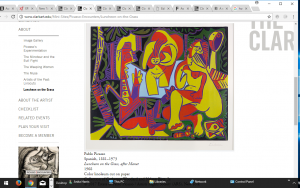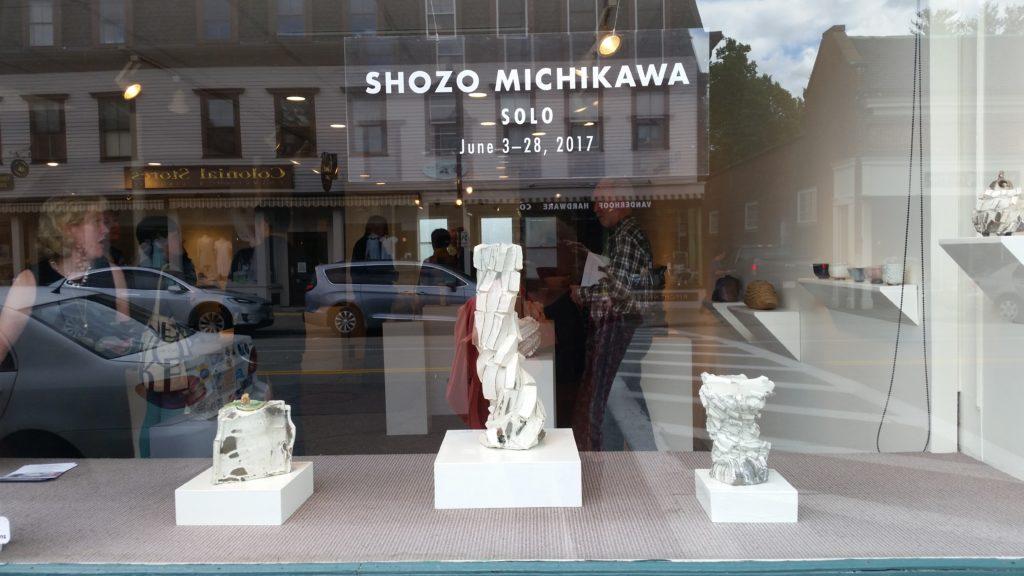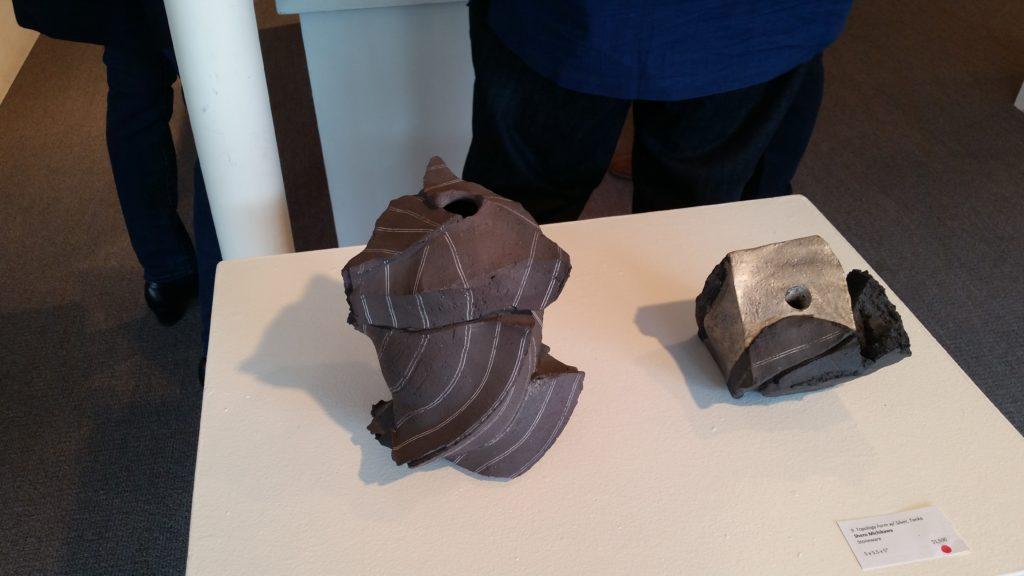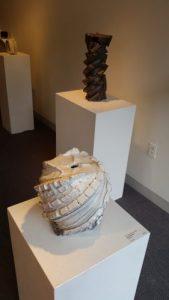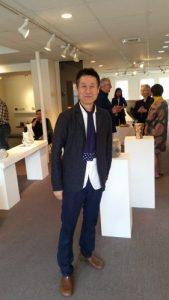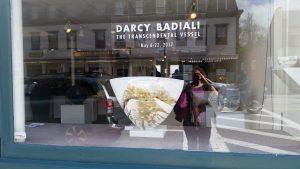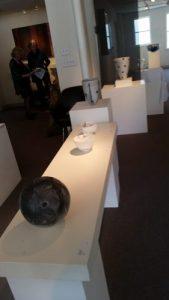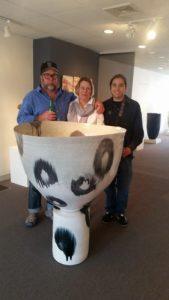LaCoste-Keane Features 3 women, 3 generations, in sculpture–thru Sept 1, 2018
It’s not too late to see the work of three influential women i from three generations of ceramicists–Karen Karnes (1925-2016) , Nina Hole (1941-2016), and Ani Kasten (1976…) –at Concord’s Lacoste-Keane Gallery. But hurry, because the show closes September 1.
Karen Karnes, was an American pioneer in ceramics from the generation that came of age after WWII. Part of two legendary art communities: Black Mountain College and the Gatehill Community in New York with Merce Cunningham, John Cage and Robert Rauschenberg among others, Ms. Karnes was a modernist at heart- her inspiration came from Bauhaus. Her work has always been sculptural–even in her functional work. In the 1980’s and 90’s Karnes created her legendary winged vessels and slit forms. In the 2000’s when strength was an issue she turned to her sculptures of combined forms which can be seen as landscape, figurative or still life. Her work is sought after and collected by individuals and museums. Karen Karnes long illustrious career touched and influenced many within her field.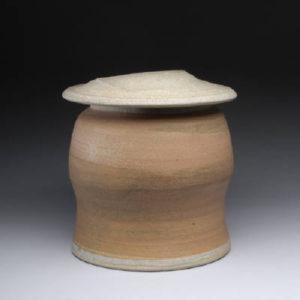
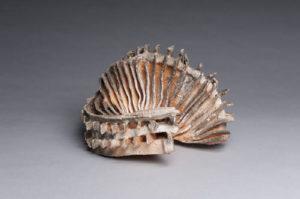 Nina Hole was a Danish ceramic artist well known for her large exterior “Fire Sculptures”. She traveled extensively around the world making her outdoor fire sculptures in situ with a team of assistants and volunteers. One can find her 25 large scale sculptures in countries like Australia, Japan, Denmark, Germany, Mexico, Turkey, Brazil and America. Architecture was a huge inspiration and in addition to making her fire sculptures; she made smaller scale sculptures inspired by houses, churches and buildings. Many who knew her intimately opined on how she really loved the firing processes as they allowed her to work with others. More than just an artist, she was also a huge champion of ceramics through her initiatives Clay Today, The International Ceramic Research Center Guldagergaard and CLAY–Museum of Ceramic Art.
Nina Hole was a Danish ceramic artist well known for her large exterior “Fire Sculptures”. She traveled extensively around the world making her outdoor fire sculptures in situ with a team of assistants and volunteers. One can find her 25 large scale sculptures in countries like Australia, Japan, Denmark, Germany, Mexico, Turkey, Brazil and America. Architecture was a huge inspiration and in addition to making her fire sculptures; she made smaller scale sculptures inspired by houses, churches and buildings. Many who knew her intimately opined on how she really loved the firing processes as they allowed her to work with others. More than just an artist, she was also a huge champion of ceramics through her initiatives Clay Today, The International Ceramic Research Center Guldagergaard and CLAY–Museum of Ceramic Art.
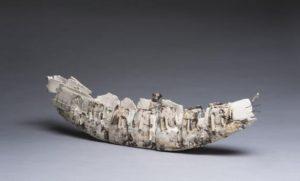 Ani Kasten is an independent ceramic artist whose knowledge came outside the norms of ceramics. She had never touched clay before apprenticing to Rupert Spira in the UK. From England she went to Nepal where she spent four years as head of a project for developing a stoneware ceramic production facility for artisan potters.
Ani Kasten is an independent ceramic artist whose knowledge came outside the norms of ceramics. She had never touched clay before apprenticing to Rupert Spira in the UK. From England she went to Nepal where she spent four years as head of a project for developing a stoneware ceramic production facility for artisan potters.
Coming back to the US she rehabbed two houses and a studio living complex over the next 10 years all the while making her distinctive ceramics combining stoneware and porcelain with unorthodox and repurposed materials. Similar to Karnes, Kasten’s ceramic foray started in studio pottery which evolved and grew to expressive sculptures for which she is known today. Often Kasten responds to current social and political climate by reflecting them in her works.
This show brings together these influential artists from three distinct generations through their interpretation of ceramic sculpture. Each offers ways of seeing the world through their innovative and artistic expression. All are highly individualistic and mold breaking in their own rights.
“We are thrilled to represent these three legendary ceramic artists and bring their work to the public.” , said Lucy Lacoste, the gallery’s founder.
Lacoste /Keane Gallery have been appointed the sole representative of Nina Hole’s estate in the USA.
The gallery is wheelchair accessible and free to the public.
Note: Lacoste Gallery is now Lacoste / Keane Gallery with Lucy Lacoste and LaiSun Keane as owners/directors.
The show runs through September 1, 2018.
The gallery is located at 25 MAIN STREET CONCORD, MASSACHUSETTS 01742 T: 978-369-0278 F: 978-369-3375 E: INFO@LACOSTEGALLERY.COM
–Anita M. Harris
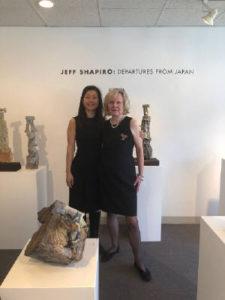

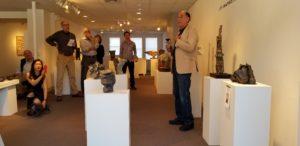
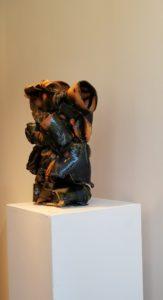
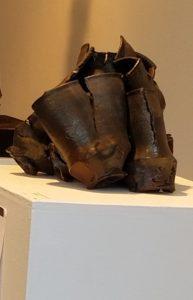
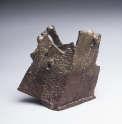
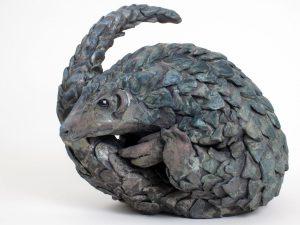

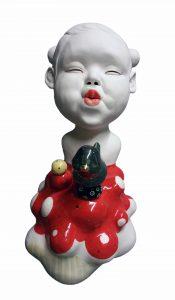
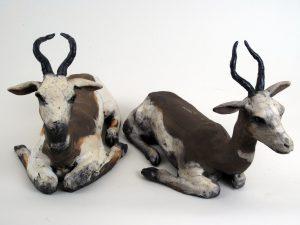
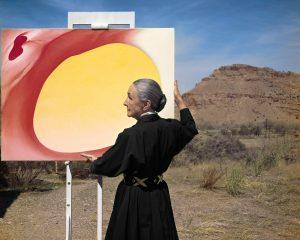
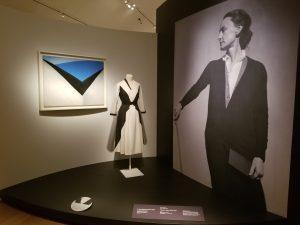
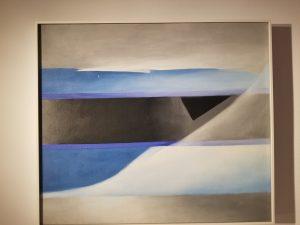
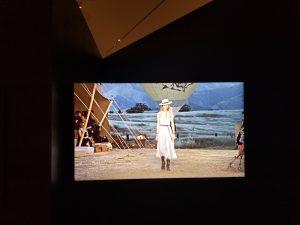
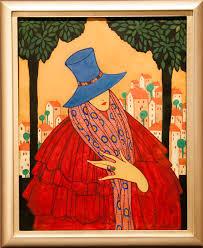
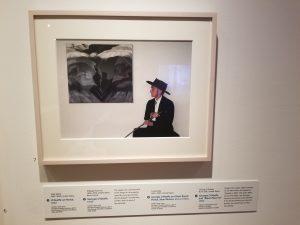
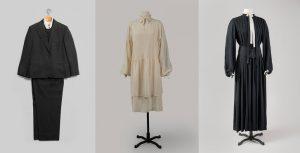
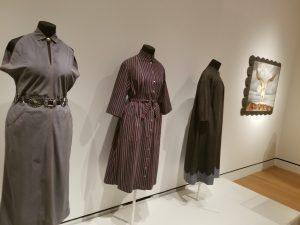
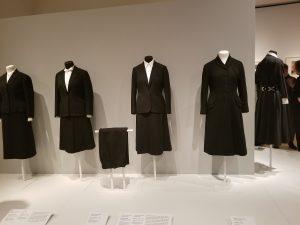






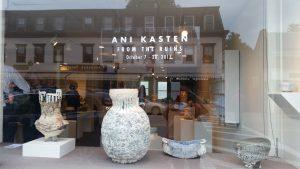
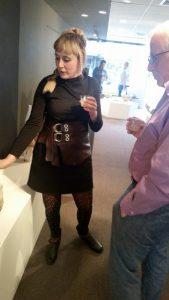
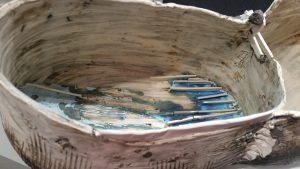
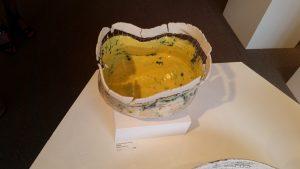
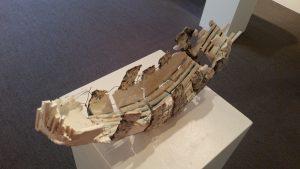 According to a gallery publication, Kasten was drawn to the medium of clay as an apprentice to British ceramist Rupert Spira, Then she headed a stoneware making facility in Nepal for four years before returning to the USA to set up ceramic studios in California, Maryland and most recently Minnesota. She has exhibited her work nationally and internationally with works in the permanent collections of the Racine Art Museum, Wisconsin; the Weisman Art Museum Minneapolis MN; and the Sana’ a Collection, the US Embassy, Sana’ a Yemen.
According to a gallery publication, Kasten was drawn to the medium of clay as an apprentice to British ceramist Rupert Spira, Then she headed a stoneware making facility in Nepal for four years before returning to the USA to set up ceramic studios in California, Maryland and most recently Minnesota. She has exhibited her work nationally and internationally with works in the permanent collections of the Racine Art Museum, Wisconsin; the Weisman Art Museum Minneapolis MN; and the Sana’ a Collection, the US Embassy, Sana’ a Yemen.

